VOL- 4 ; ISSUE- 4, PUNE RESEARCH - An International Journal in English (ISSN 2454-3454) JIF 3.02
4.4 ENGLISH
Area of Article : ALL
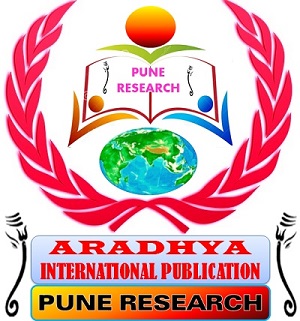
VOL- 4 ; ISSUE- 4, PUNE RESEARCH - An International Journal in English (ISSN 2454-3454) JIF 3.02
4.4 ENGLISH

VOL- 4 ; ISSUE- 4, PUNE RESEARCH - An International Journal in English (ISSN 2454-3454) JIF 3.02
4.4.1 ENGLISH
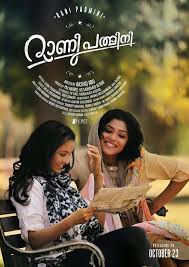
Film, the most popular media, has a tremendous
impact to carve out how individual can feel about a particular topic. Indian
films portrayed women characters as doubly marginalized creatures. In earlier
times women were featured as a commodity only to satisfy male urge and their
bodies were featured in a way as if they are meant for male consumption with
some few exceptions. Now changes occur and women begin to play the role of
central characters. The audiences also begin to perceive the makeover from the
conventional girl to an iconoclastic woman. The present study focuses on three
movies ‘Queen’ (Hindi), ‘How Old Are You?’ (Malayalam), and ‘Rani Padmini’
(Malayalam) with giving due emphasis on how the women characters are
transformed or how they are emancipated in this patriarchal world. Three films
mentioned here are highly inspirational and motivational story of women’s
empowerment.
Keywords- commodity, iconoclastic woman, emancipation,
empowerment
VOL- 4 ; ISSUE- 4, PUNE RESEARCH - An International Journal in English (ISSN 2454-3454) JIF 3.02
4.4.2 ENGLISH
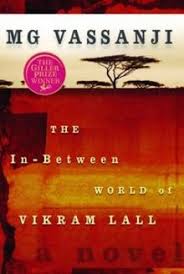
Moyez G. Vassanji is a
writer of six novels, two collections of short stories and a memoir of his
travels in India. Vassanji in his novels focusses on subjects like wars, post-
colonisation and its effects on the people, especially the immigrants from
India to Africa, Canada and the United States. In his novel The In- between
World of Vikram Lall, Vassanji brings out the sufferings caused to the people
who fall victim of the wars between the protestants and the colonizers.
Throughout the novel we see the changing Africa from 1950s to the fear of
seventies and eighties and as a consequence the changes occurring in the lives
of the characters. The combat between the Mau-Mau rebels in Kenya and the
Britishers place the innocent people nowhere. The present paper throws light on
one such character named Vikram Lall, the protagonist in the novel. Vikram is
the grandchild of an Indian railroad worker and now a third generation
immigrant in Kenya. The paper deals with the sense of 'in-betweenness' that Vikram Lall comes
across in every important phase of his
life. Right from childhood to his later life, Vikram Lall finds himself in an
in-between situation. Further we see instances where Vikram Lall is always
clutched at the centre of two warring worlds, one of childhood innocence and
the other of a colonial world of repressive, undignified subjecthood.
Keywords: in-between, immigrant, war, victim and victimizer.
VOL- 4 ; ISSUE- 4, PUNE RESEARCH - An International Journal in English (ISSN 2454-3454) JIF 3.02
4.4.3 ENGLISH
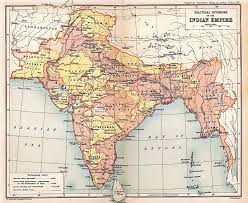
By the mid-eighteenth century A.D., the
Colonial Government in
Keywords: Colonial Government, East
India Company, Language, English, Justice, etc.
VOL- 4 ; ISSUE- 4, PUNE RESEARCH - An International Journal in English (ISSN 2454-3454) JIF 3.02
4.4.4 ENGLISH
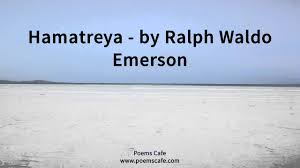
The Sage of concord, the
American transcendentalist, R. W. Emerson known for his Philosophical and
Literary writing . Emerson had developed strong passion in the Hindu’s
scriptures during his Harvard days. He started reading Vedantic Philosophy in
1840’s, and continued throughout his life. Emerson’s prose and poetry filled
with Vedantic quotations. Emerson
borrowed themes from Upanishads and other Hindu scriptures for his essays. The
Philosopher and Over soul , spiritual law and etc. Best examples of Emerson
essays which echoes the Vedantic ideology. The titles of few poems like
Hamatreya, Bramha and etc, are borrowed from hindu scriptures. Emerson used
Upanishadic concepts as a themes of his poems such as wood notes , the
celestial love, sphinx and sprit. The objective of this present study is to
interpret Emerson’s poem Hamatreya and contend contrary to the observations of
Emersonian critics in explaining the meaning of the title Hamatreya.
Key words: Philosophical—Scriptures—Vedantic—Upanishads—Echoes.
VOL- 4 ; ISSUE- 4, PUNE RESEARCH - An International Journal in English (ISSN 2454-3454) JIF 3.02
4.4.5 ENGLISH
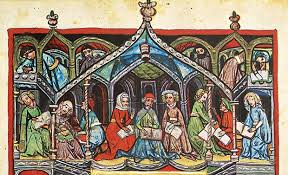
This paper uncovers with the help of novel, Figurative
Histories, the presence of differences, hatred, disliking’s, prejudices and
negativity among Hindu and Muslims in the name of religion after the
Bharat-Pakistan partition. It presents how the administration was failed in
controlling before the riot came into flow and let loose the fanatics on the
people belonging to another community though India is a secular country. After
reading the novel we can easily judge that the fundamental list the community
at hatred, must suffer individually foe their social as well as professional
life and that politicizing ethnicity and ethicizing of politics is largely
responsible for increasing cultural conflict. People in the universe strongly
believe that they are the creation of the omniscient God and as per their
assumption and blind beliefs try to find
this existence of God in their own way and this may have given birth to the
different religions of the world. The tragic outcome of this is that they have
started to fight against each religion to prove the authenticity of their so
called religion and at the end we can see that the humanity has to suffer so
pathetically. Figurative Histories is among the literary work which depicts
like Amrita Pritamˈs Pinjar the sad history of communal riots.
Key Words: Religious
Abhorrence, communal riots, Ahmedabad
VOL- 4 ; ISSUE- 4, PUNE RESEARCH - An International Journal in English (ISSN 2454-3454) JIF 3.02
4.4.6 ENGLISH
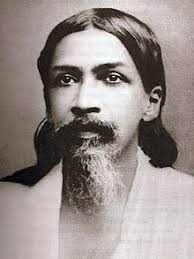
Poetry stirs the soul with the deepest delight. First, the poet himself
feels “a divine Ananda, a delight interpretative, creative, revealing, and
formative”2 and then, he succeeds in pouring this deep
spiritual joy into all those who are prepared to receive it: ‘This delight is
not merely a godlike pastime, it is a great formative and illuminative power.’
VOL- 4 ; ISSUE- 4, PUNE RESEARCH - An International Journal in English (ISSN 2454-3454) JIF 3.02
4.4.7 ENGLISH
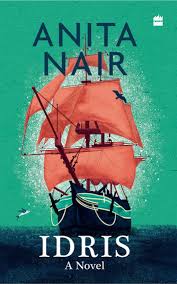
VOL- 4 ; ISSUE- 4, PUNE RESEARCH - An International Journal in English (ISSN 2454-3454) JIF 3.02
4.4.8 ENGLISH
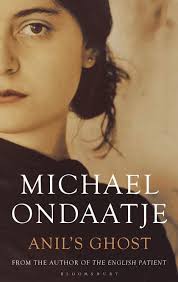
Michael Ondaatje, is a Sri Lankan settled in Canada and his literary
artifacts constitute Sri Lankan Diaspora discourses. He is capable of
transcending dichotomies like total assimilation and alienation or
acclimatization and ethnic assertion. He is capable of straddling between the
ethnic boundaries of both the countries. In Anil’s Ghost (2000) Ondaatje’s
affiliation towards his ancestral land is fore grounded. Ondaatje renovates the
native history by clearly depicting the suppressed and unidentified past.
Key words: postmodern, identity, archaeology,
history, war
VOL- 4 ; ISSUE- 4, PUNE RESEARCH - An International Journal in English (ISSN 2454-3454) JIF 3.02
4.4.9 ENGLISH
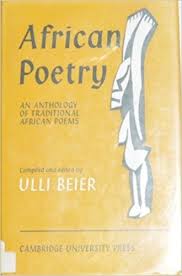
African literature is
inscription of and instigation Africa. This literature comprises of a cadaver
exertion in sundry languages and an assortment of field’s choice from uttered
literature to works on paper in imposing lingo or language. In African
literature, subterranean ingrained part is Traumatic Rhubarb. Tribulation,
Apartheid, Dehumanization and Trauma are leading theme tune of African
literature, life, civilization, nation and culture. This research work attempts
to scrutinize substantial gist regarding African literature from the
memorialized poems of Maria Manuela Margarido and Tanure Ojaide’s selected
poems with special reference to Anthonia C. Kalu’s The Rienner Anthology of
African Literature. Essentially, this
book divulges the fruitfulness of African inventiveness, legends and
extravaganzas; works by such eminent writers as Chinua Achebe, Bernard Dadie,
Maria Manuela Margarido, Tayeb Salih, Wole Soyinka, Ezenwa Ohaeto, Tanure Ojaide,
Ngugi wa Thiong'o; and works of fiction and poetry by numerous
innovative authors. The present research work alienated into four sections. The
first section comprehends A Concise Discourse on African Literature. The second
section is about Maria Manuela Margarido’s deals with the theme tunes of
suffering, exploitation and torturing of Native Africans by colonizers in his
celebrated poem, “You Who Occupy Our Land”. The third section consist of Native
Africans Endorsement in Tanure Ojaide’s poem entitled “Launching Our Community
Development Funds”. The last part summarizes about conclusion of this research
work.
Key Words: African Literature, Traumatic Rhubarb, Enduring Tribulation, Apartheid, Racial Discrimination, Maria Manuela Margarido, Tanure Ojaide, Black Nativism, Native Africans and Dehumanization
VOL- 4 ; ISSUE- 4, PUNE RESEARCH - An International Journal in English (ISSN 2454-3454) JIF 3.02
4.4.10 ENGLISH
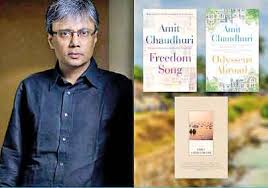
Amit Chaudhuri is a versatile writer of contemporary Indian writings in
English. He is a literary critic, essayist, novelist, poet and also a great
singer. He has remarked as dazzling star of contemporary Indian writers in
English. His writings are discernible, observable which strikes and vibrate the
heart and mind of the readers. He has given noted importance for the Indian
values. His works reflect the Indian values coated in Bengali sensibility.
Chaudhuri works rebound the Bengali culture, ethnicity and regional sensibility
of Calcutta. Amit Chaudhuri has also explored the vitality of Indian culture
through his novels and embellished the tradition of Indian English novels with
his creative innovations. Chaudhuri’s novels provide a new perspective on the
theoretical models of the Indian domesticity. The domestic settings of his
novels illustrate the material history of the Indian home, associated with
religious, social and cultural practices, he also exhibits how these are
adopted and reworked by the protagonists. His artistic perception and
innovative vision assist him to change the conventional concepts of Indian
English fiction. The region is a mere setting or background of his works. It
plays an important role in the development of the story and characterization.
The main objective of this paper is a trial to streak the cultural sensiblity
about tradition, rituals, family, class and identities in the novels of Amit Chaudhuri.
Keywords: Culture, Ethnicity, Indian tradition, Domesticity, Rituals.
VOL- 4 ; ISSUE- 4, PUNE RESEARCH - An International Journal in English (ISSN 2454-3454) JIF 3.02
4.4.11 ENGLISH

The term `values’ is used in this review to refer to the principles and
fundamental convictions which act as general guides to behaviour, the standards
by which particular actions are judged to be good or desirable and examples of
values are love, equality, freedom, justice, happiness, security, peace of mind
and truth. The purpose of this study is to grapple with the values of the
university students to see whether studying literature enhances their
perspectives in values After the five-week study of the plays tackled through
the moral educational perspective, their post test results were compared with
50 freshmen students in the same department. The results show that there is no
difference between freshmen and junior teacher trainees in terms of the Kolbian
categorization.
Keywords: Values education, teacher
trainees, literary texts.
VOL- 4 ; ISSUE- 4, PUNE RESEARCH - An International Journal in English (ISSN 2454-3454) JIF 3.02
4.4.12 ENGLISH
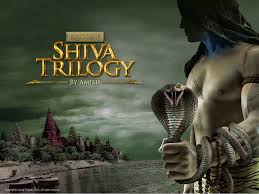
The success of popular literature is prominently scaled by its high
sales and its capacity to entertain, rather than its position in the literary
canon. In the history of Indian
publishing, Amish Tripathi’s fiction Shiva Trilogy that includes the
series of three novels- Immortals of Meluha (2010), The Secret of The Nagas
(2011), and The Oath of Vayuputras (2011) has become the fastest selling book
series with 2.5 million copies in print and over 70 crores in sales. Shiva
Trilogy, usually categorized as fantasy myth, is a blend of Myth, Fantasy,
Science fiction, Gothic, and Thriller with Historical Romance; notably all the
sub-genres of popular fiction. My article analyses diverse characteristics that
qualify the fiction Shiva Trilogy to be at the top rank in the category of
Indian Popular fiction. It also presents a symposium on myth and reality attached
to popular fiction.
Keywords: Popular Fiction, Literary
Fiction, Mass reader vs. Class reader, Mythology, Fantasy, Catharsis, Neurosis,
Egocentric Hero
VOL- 4 ; ISSUE- 4, PUNE RESEARCH - An International Journal in English (ISSN 2454-3454) JIF 3.02
4.4.13 ENGLISH
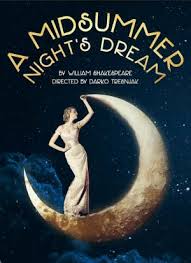
In A Midsummer Night’s Dream,
Theseus interconnects lunatic, lover and poet haphazardly. Each is distinctive
in his perception of actuality, with the poet so much engrossed in his
imagination that he can almost formulate his own universe from his fantasies.
Theseus links together the poet, the madman, and the lover. They “[a]re of
imagination all compact”. The lunatic’s fantasy is strained with images of
ordeal; the lover is tricked by a twist in vista; the poet is assessed by his
eye, which rolls in a “fine frenzy” and permits his mind to exemplify and give
a figure to “the forms of things unknown”. As the play demonstrates, and
explicitly satirizes, the imagination in love often operates in defiance of
“discretion”, particularly in making beauty observable by no one but the maker.
The poetic prowess, different from that of a Quince or Bottom, is in
concordance with circumspection, and its arts are constituent of universal
perceptiveness, both as exquisite and as meaningful. In love, the ludicrous
consequence from the ascendance of imagination over reason, and the lover is
unconscious of his being ludicrous.
Keywords: - love,
madness, and poetry.
VOL- 4 ; ISSUE- 4, PUNE RESEARCH - An International Journal in English (ISSN 2454-3454) JIF 3.02
4.4.14 ENGLISH

The Invisible Man is a science fiction novella written by H.G. Wells in 1897. The Invisible Man is the story of an
invisible man, who achieves through his invisible identity what he cannot
achieve through his real identity. The invisible man of the title is Griffin, a
scientist who theories that if a person’s ‘Refractive Index’ is changed the
exactly that of air and his body does not absorb or reflect light, and then he
became invisible. More than a scientific romance, this is the story of a man,
Griffin, who accidentally stumbles upon the logically impossible idea that a
man can be invisible, only to be introduced to the harsher realities of
existence. This refractive experiment leads him in to an extraordinary way of
life. Then, he himself successfully carries out this procedure, but cannot
regain his original form again, and as a result becomes mentally unstable.
Key Words: Scientific Romance, Invisible
Identity vs Real Identity.
VOL- 4 ; ISSUE- 4, PUNE RESEARCH - An International Journal in English (ISSN 2454-3454) JIF 3.02
4.4.15 ENGLISH
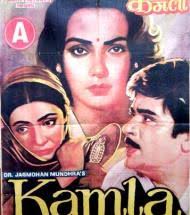
This paper attempt to study the brief
biography of Vijay Tendulkar and his way of portraying female characters in his
plays. Vijay Tendulkar is the most prolific and controversial dramatist among
the Post-Independence Indian playwrights. Thematically Tendulkar's plays have
ranged from the exploration of man-woman relationship to reinterpretations of
social, historical, and political episodes. His plays concentrates on different
aspects of the human character and complexity of human relationship. He
fascinated by the violent exploited-exploiter, husband-wife, brother-sister,
lover-beloved relationship.
VOL- 4 ; ISSUE- 4, PUNE RESEARCH - An International Journal in English (ISSN 2454-3454) JIF 3.02
4.4.16 ENGLISH
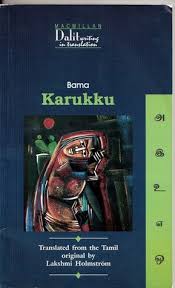
The Indian history has been a vivacious record
of conflict and dialectic between exploiters and exploited, colonizer and
colonized, powerful and powerless. Dalit literature is known for its revolt and
struggle of lower caste against the high class people. Dalit women are
especially doubly exploited. Feminism or feminist aspect deals with society in
general and women in particular. This research paper highlights the need of
Dalit feminist writing and the the problems of dalit women and self realization
of marginalized women with the reference of Bama's Karukku.
Key words:
Dalit feminism, resistance, marginalization, patriarchy.
VOL- 4 ; ISSUE- 4, PUNE RESEARCH - An International Journal in English (ISSN 2454-3454) JIF 3.02
4.4.17 ENGLISH
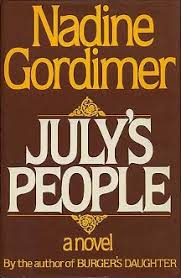
Africa, after experiencing a haunting era of
intense suffering and untellable horrors appeals to the attention of the world
through the effective medium ofletters. The concentric systems of economic
exploitation, racial prejudice and colour differences are beginning to be
revived through softly. It is an undeniable reality that the ‘thick’ black
bodies of the natives were tortured and their psyche was fragmented with the
so-called inferiority and intellectual inadequacy. Their desperate will to
survive has found an outlet for their ‘impotent’ hope showed up against the
apathetic onlookers of the apartheid scenario.
VOL- 4 ; ISSUE- 4, PUNE RESEARCH - An International Journal in English (ISSN 2454-3454) JIF 3.02
4.4.18 ENGLISH
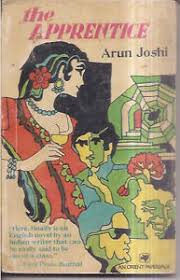
This research paper has attempted to search out and prove that ‘The Apprentice’, Joshi‘s third novel, takes his search for understanding man‘s predicament one step further toward the transcendental and there is a cycle od sin,repentance and redemption. Its central figure is a man named Ratan Rathor, essentially docile and uncourageous whose life more or less parallels the coming into being of postcolonial India. From the above short description of Arun Joshi‘s work, one thing is clear that the all the works of the writer centre on the twin aspects of ―conflict‖ and ―self-identity,‖ which are interwoven and inseparable. In search of self-identity and to resolve the ―conflict‖, Arun Joshi through his characters resolves the problem by redemption in various ways through the cycle of sin and repentance as he does in his third novel’The Apprentice’.
Key words- cycle, sin, repentance, redemption, apprentice, selfishness, alienation, humiliating, selfless service